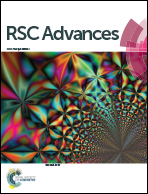Identification of dimethyl sulfide in dimethyl sulfoxide and implications for metal-thiolate disulfide exchange reactions†
Abstract
The concentration of dimethyl sulfide (DMS) in seven different samples of research grade dimethyl sulfoxide (DMSO), including one deuterated sample, was measured by GC-MS. The average concentration of DMS is 0.48 ± 0.14 mM (range: 0.44–0.55 mM) and ca. 0.35 mM in DMSO-d6. The presence of DMS in DMSO is potentially problematic for compounds that are susceptible to reaction with DMS and are present at μM–mM concentrations. Standard methods of purification of DMSO were unsuccessful in removing all traces of DMS.


 Please wait while we load your content...
Please wait while we load your content...